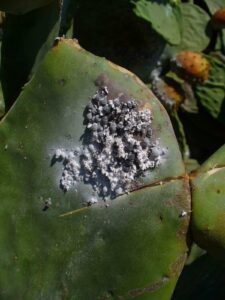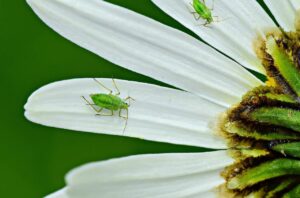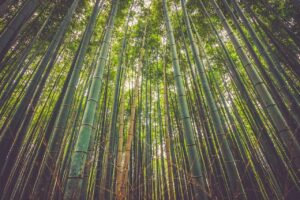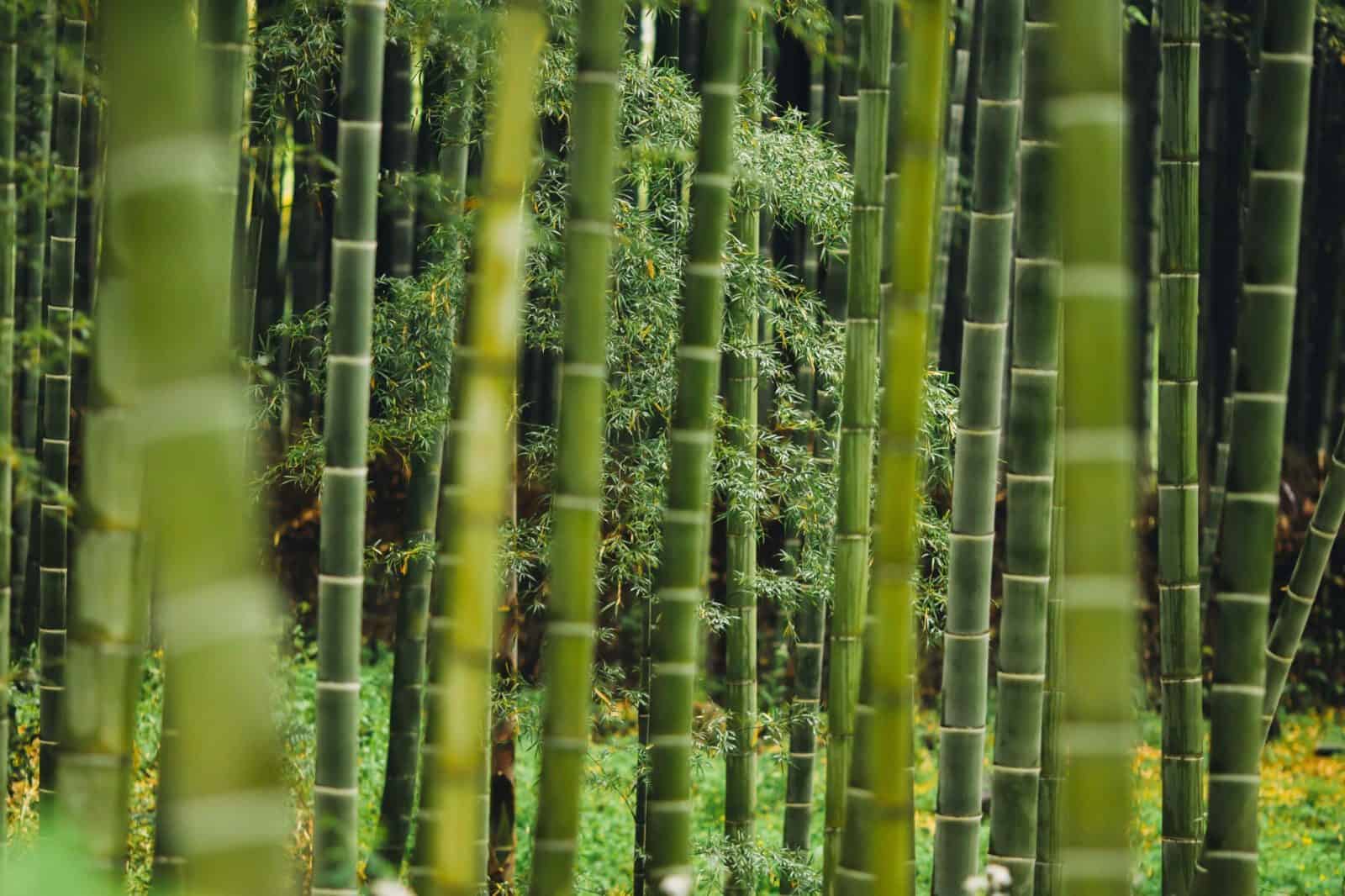What Diseases and Pests Attack Bamboo ?: [Identify and Treat]

 If there is a plant that has been used by humans, it is bamboo; therefore knowing how to treat bamboo diseases is important.
If there is a plant that has been used by humans, it is bamboo; therefore knowing how to treat bamboo diseases is important.
The good news is that they are quite resistant to attack by all kinds of microorganisms, insects and fungi , so helping them progress is not difficult.
But it is not enough just to want it to be well, we have to make an effort to recognize what symptoms it is presenting and the actions that we can apply to counteract them.
And that is exactly what we will talk about today so better pay all your attention so that you can keep your bamboos in optimal conditions.
Woodlouse
The disease causes spots to appear on the back of the leaves and, in some cases, along the trunk .
This action can be evidenced in two different ways depending on the type of mealybug that is producing it:
- Brown spots with a soft, cottony consistency apparently with a rough layer on top. They can vary in tone in terms of brown, some being lighter and others darker.
- White spots with soft elevations as if it were cotton.
Although these spots can be easily removed, the reality is that it is not enough to attack the insect that produces them.
Treatment of mealybug on bamboo
 To get the plant back in optimal conditions it will be necessary to apply an appropriate insecticide for this disease.
To get the plant back in optimal conditions it will be necessary to apply an appropriate insecticide for this disease.
The correct way to do it will depend to a large extent on the state of the insects, being much easier to eliminate the larvae than the adults .
After the pest is eliminated, the symptoms of the disease will disappear allowing the bamboo to return to its natural condition.
Likewise, potassium soap can be applied on the underside of the plants and neem extract , which will act as an insecticide.
Mites
Mites are present in almost all environments and do not give respite to bamboo plants.
Its action is evidenced in the presence of small yellow spots on the underside of the leaves.
This action causes them to wear out in their structure and end up falling, causing damage to the development of the plant .
At times, it will be possible that they also form like a series of cobwebs that further facilitates recognition by mite attack.
Treatment of mites on bamboo
When the attack is on a superficial level and has not become serious , it is best to moisten the plant more frequently.
This is because the mites do not see in the humidity a pleasant ecosystem for their subsistence and they end up disappearing.
But when the attack is more serious, it will be necessary to apply some type of chemical to help control it.
Aphids
 It is another of the insects that are capable of making the bamboo plant sick more quickly.
It is another of the insects that are capable of making the bamboo plant sick more quickly.
To recognize aphids you will only have to look at their structure since they are of similar colors, such as green, yellow or white.
As the sap of the plant is consumed, they end up weakening it excessively, being possible even that they cause death.
They attack in groups, so when you see one, surely there are others nearby.
Treatment of aphids on bamboo
To deal with aphids it is essential to use a chemical capable of causing the damage necessary for their elimination.
However, it must be taken into account that this product is not so harmful that it also ends up affecting the correct development of the plant.
In case of not having proper knowledge about which one to buy, it is best to seek advice from a specialized center such as a nursery.
Leaf fall
 Although bamboo is very resistant, it can suffer some damage caused by poor care.
Although bamboo is very resistant, it can suffer some damage caused by poor care.
The fall of the leaves in inappropriate seasons such as summer or spring can occur.
However, you should not lose sight of the conditions that are generating this condition.
If in a short time it is seen that the plant is already renewing its leaves, there is nothing to worry about since it is a normal cycle.
But if it is the case that the fall of leaves is a product of humidity, it will be necessary to do the treatment suggested below.
Treating leaf drop on bamboo
When leaf drop is noted in a strange condition, this may be due to excess moisture contracted after watering.
To help it return to its natural state, a good plan is to work the soil where it is planted to help it dry.
If this action is not carried out in the correct time, the plant could die.
With these simple tips you will have the opportunity to see your plant radiant and lush as always after an illness.
If you have a bamboo plant at home, take care of it like a treasure because that is just what it is.
White spider
 To combat a white spider infestation, an extract of garlic and chili can be applied , although if the plant is very affected , it is best to remove it to prevent it from spreading to the others .
To combat a white spider infestation, an extract of garlic and chili can be applied , although if the plant is very affected , it is best to remove it to prevent it from spreading to the others .
If the problem persists , it is important to consult an expert to apply an effective miticide .
Rust
It attacks the aerial part of the plant , mainly the leaves and stems , where powdery masses with a rusty appearance appear .
The recommended treatment is based on fungicides .
Red spider
It can be soaked at night by sprinkling to keep it moist.
To combat, an extract of garlic and chili can be applied , although if the plant is very affected, it is best to remove it to prevent it from spreading to other plants.
Bamboo wire worm
It is the common name of the larvae of beetles that live in the ground (coleoptera: Elateridae) , they have produced economic losses in the production of bamboo in China.
The larvae damage the underground shoot and the root system of the bamboo.
Noctuidos Noctuidos of bamboo (Lepidoctera: Noctuidade)
They eat bamboo shoots. Among them Kumasia kumaso, Apamea apameoides, Oligia vulgaris, and Apamea repetita conjuncta is the most important, which can cause about 90% of deaths.
It is common to find several of these species next to the bamboo shoots.
The damage is caused by the larvae, which burrow into new shoots and stems and cause shoot death or damage in most cases.
Bamboo weevils
There are about 18 species of weevils (Coleoptera: Curculionidae) distributed in China, Bangladesh, Japan, India, Myanmar, Brazil, Sri Lanka, that attack bamboo shoots.
Both the adults and the larvae of these weevils feed on shoots, although the larvae are the ones that pierce the bamboo shoots, and are responsible for most of the damage.
Stigma chinensis (Chrysomelidae)
It attacks only the new growing stems and as a consequence the internodes become short and sometimes twisted.
If the attack is severe, the stems are lost. The eggs are left on the tender stems and later the damage caused by the larvae stops the growth of the stem.
Bamboo lobster
The lobster is one of the most important groups of pest insects that affects bamboo.
There are about 40 species of bamboo locusts that feed on bamboo leaves.
They are classified into several genera of which Hieroglyphus are the most common. Both adults and nymphs feed on bamboo shoots and leaves. They cause complete defoliation of the bamboo support.
Sheet Rollers
Leaf rollers (Lepidoptera Pyralidae) belong to the most important groups of bamboo leaf feeders. More than ten species of bamboo leaf rollers attack bamboos.
Among them, four species Algedonia coclesalis, Crocidophora evenoralis, Demoboty pervulgalis, and Circobotys aurealis are the most important. The damage is caused by the larvae, which attach the leaves like boxes and feed on the upper tissues of the leaves.
Cyrtotrachelus longipes (Curculionidae)
It is a worm that attacks the upper apex of new stems and in most cases eats them.
How do we protect bamboo from insect attack?
Insects attack bamboo a lot, specifically after being pruned for use.
For this reason, it is necessary to carry out the necessary care to avoid further damage. Plant protection can be divided into two lines: a) the growing plant and b) bamboo as a product.
There are two ways to protect against insect damage:
- The first is to vary the harvest season to alter the life cycle of the pest.
- The other is to treat the bamboo cuttings physically or with chemicals. Physical treatments include: fire, boiling the wood, and varying the harvest season. Chemical treatments, meanwhile, include mercury and boric acid solution, among others. However, the most effective control, whether the bamboo is uncut in the clump or in the workshop, is to burn the stalks that have been attacked.

![Photo of Albizia Julibrissin: [Cultivation, Irrigation, Associations, Pests and Diseases]](https://www.complete-gardening.com/wp-content/uploads/2022/08/albizia-julibrissin-cultivation-irrigation-associations-pests-and-diseases-300x220.jpg)
![Photo of Weeping Willow Pests and Diseases: [Detection, Causes and Solutions]](https://www.complete-gardening.com/wp-content/uploads/2022/08/weeping-willow-pests-and-diseases-detection-causes-and-solutions-390x220.jpg)
